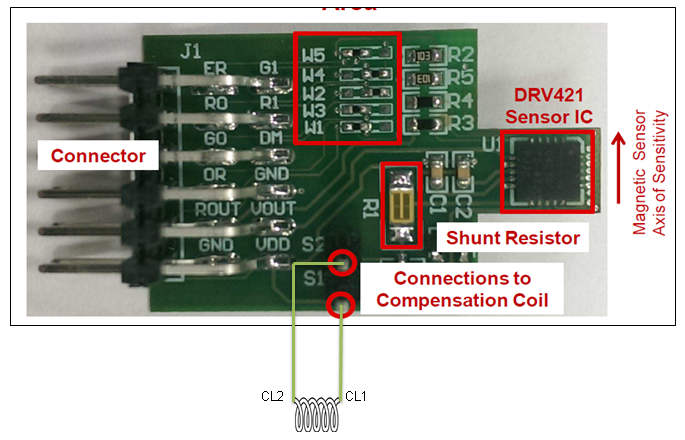Hi,
I observed two problems during testing of DRV421EVM.
1) As shown in below figure if I connect let say S2 (in kit) to CL2 (compensation coil over core) and S1 to CL1, board takes 10mA while on interchanging compensation coil connection that is S2 to CL1 and S1 to CL2 board takes ~70mA (limited to < 70mA due to 10 ohm sense resistor and 65 ohm compensation coil resistance at 5VDD). There was some remanence in core so I even tried degauss option, it works with S1-CL1 & S2-CL2 combination but on reversing that is S1-CL2 & S2-CL1 (when board takes 70mA) it doesn’t work. And in 70mA consumption case OR (over range) pin voltage is low indicating saturation.
Can anyone please explain why compensation coil connection reversal is making abnormal behavior ?
2) Assuming there could be problem with IC in above case I replaced the IC but it did not perform in the beginning and then started performing after few minutes. It seems it got hanged. Later on repetition of above case same behavior observed.


